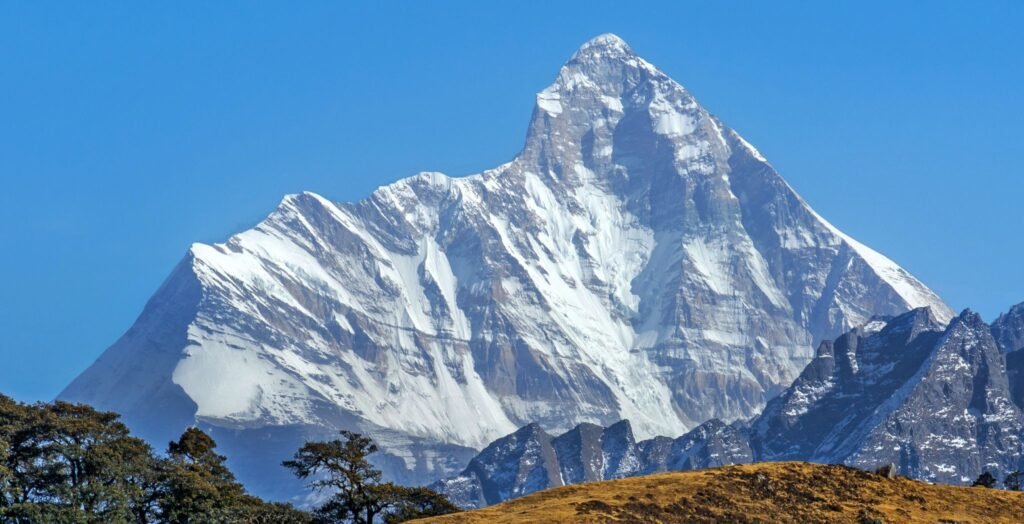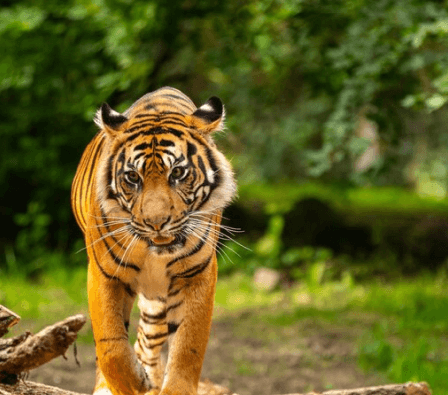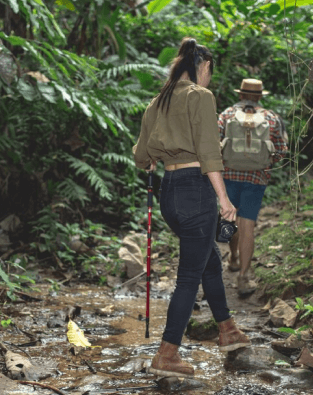Nanda Devi National Park and the Valley of Flowers National Park, two of India’s most famous and picturesque UNESCO World Heritage Sites, are tucked away in Uttarakhand’s Garhwal region. Nestled amidst the majestic Himalayas, these natural wonders are a sanctuary for hikers, photographers, and nature enthusiasts.
In addition to its majestic beauty, Nanda Devi, the second-highest peak in India at 7,817 meters, is also revered in local folklore for its spiritual significance.
Renowned for its vibrant landscapes and abundant biodiversity, the Valley of Flowers is a vast meadow teeming with wildflowers.
Offering a range of experiences, from the excitement of trekking at high elevations to the delight of seeing rare flora and fauna, these two parks stand as symbols of the diversity and tranquilly of nature.
The Nanda Devi and Valley of Flowers National Parks are pure magic for anyone looking for a mix of adventure, peace, and breathtaking landscapes.
Why Go to the Valley of Flowers and Nanda Devi?
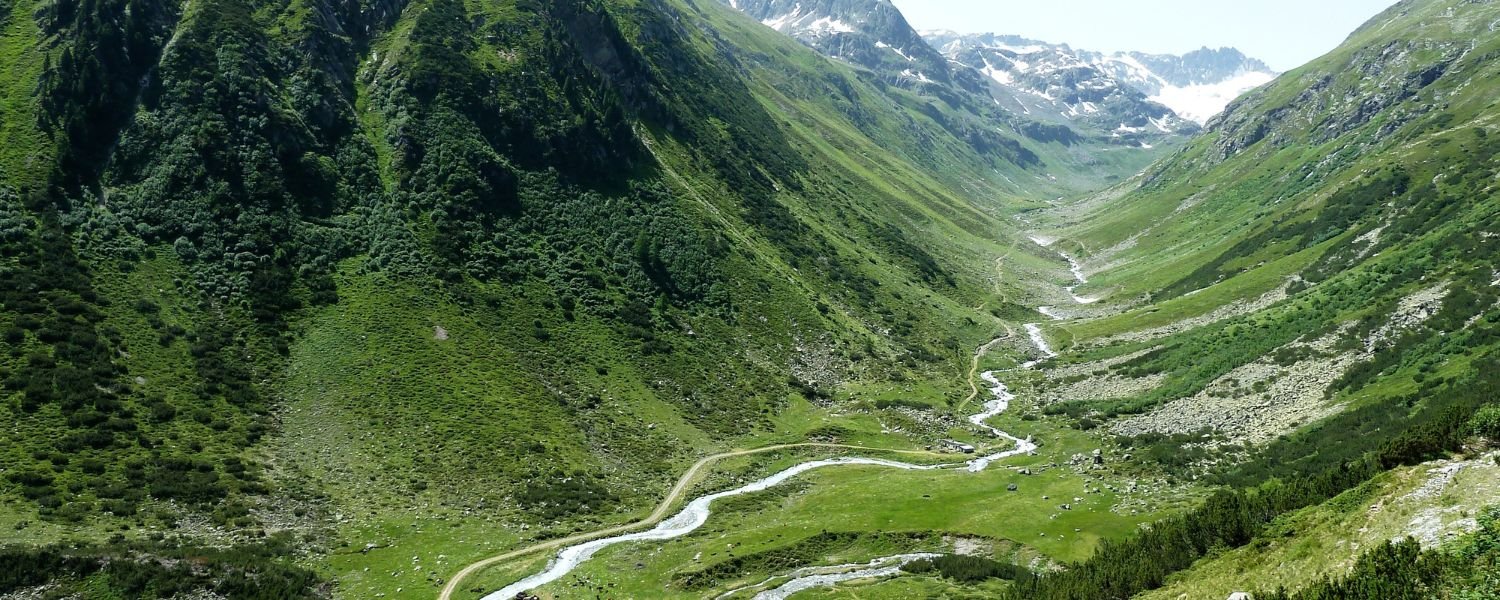
In addition to their famed natural beauty, Nanda Devi and the Valley of Flowers have spiritual and cultural significance.
There are numerous sacred sites in the areas around these parks, the most well-known of which is Nanda Devi. For hikers, nature lovers, and wildlife photographers, the parks’ landscapes offer the ideal balance of adventure and natural beauty.
With its vibrant wildflowers and stunning alpine meadows, the Valley of Flowers is a photographer’s dream come true, especially during the busiest blooming season.
However, Nanda Devi gives hikers the opportunity to push themselves by traversing difficult terrain while taking in breathtaking Himalayan views.
Numerous species of wildlife, including endangered ones like the Himalayan tahr and snow leopard, can be found in both parks.
They are also guaranteed to be preserved because they are UNESCO World Heritage Sites, which makes them the ideal location for anyone looking to experience nature in its most pristine state.
Best Time to Visit
Summer and autumn, from May to October, are the ideal seasons to visit Nanda Devi and the Valley of Flowers. Trekking is ideal during this time of year because of the clear skies and moderate temperatures.
More precisely, the best time to visit the Valley of Flowers is from July to September, when the wildflowers are in full bloom and produce a rainbow of hues.
Trekking can be somewhat difficult during the monsoon season, though, due to the possibility of landslides and slick roads.
How to Reach Nanda Devi and Valley of Flowers National Park
By Air
Jolly Grant Airport in Dehradun, which is roughly 295 kilometres from Joshimath, the starting point for treks to both Nanda Devi and the Valley of Flowers, is the closest airport to these stunning destinations. Airports in Uttarakhand connecting the Himalayan state to the world make it easier for travelers to access this beautiful region. Dehradun is served by a number of flights from major Indian cities, including Delhi and Mumbai.
You can take a bus or hire a taxi from Dehradun to Joshimath. Even though the trip might be lengthy, it prepares you for the upcoming trekking experience by providing breathtaking views of the mountains and rivers.
By Train
Haridwar, which is roughly 300 kilometres from Joshimath, is the closest train station to the parks. Major cities like Delhi, Mumbai, and Kolkata are all easily accessible from Haridwar.
You can travel to Joshimath, the town that serves as the entry point to Nanda Devi and the Valley of Flowers, from Haridwar by bus or taxi.
By Road
You can drive from Haridwar to Joshimath, passing through Rishikesh and Devprayag, if you’d rather take a picturesque road trip.
Driving along the Ganges River and passing through stunning scenery makes the journey worthwhile despite its difficulty. As you get closer to the hills, be ready for winding, narrow roads.
Trekking to Valley of Flowers
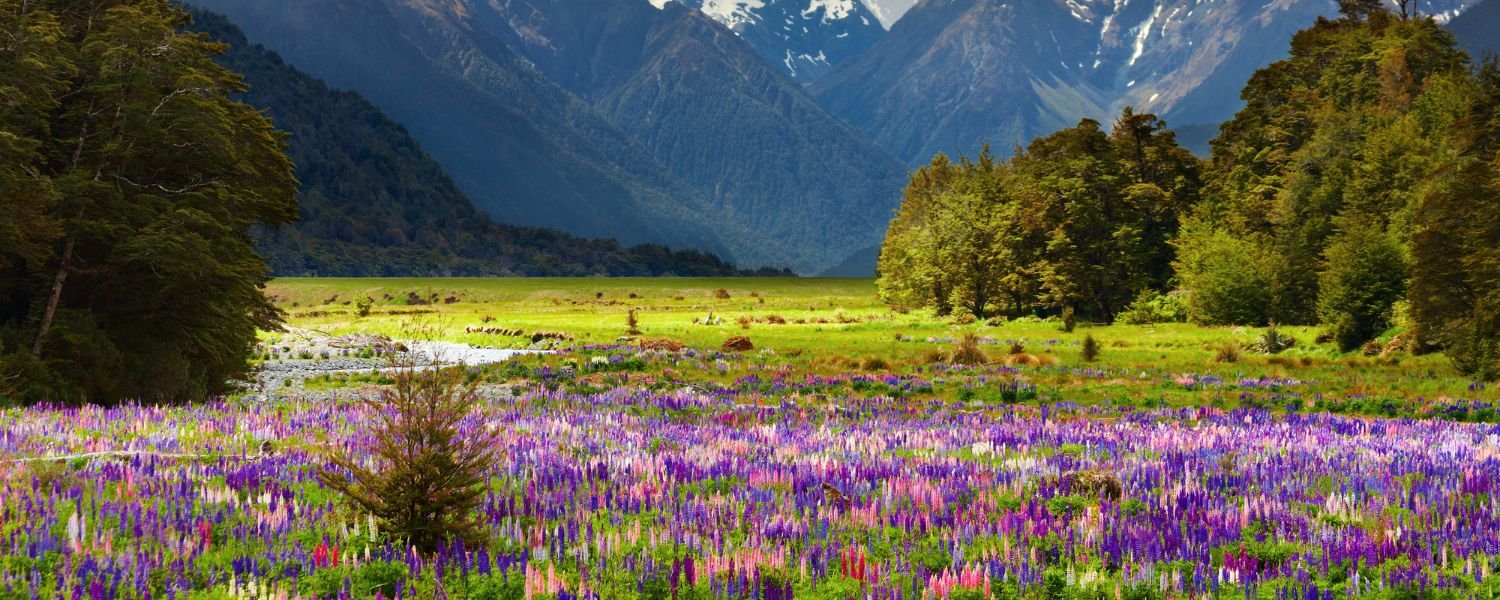
About 20 kilometres from Joshimath, at Govindghat, is where the trek to Valley of Flowers starts. You will walk roughly 13 km uphill from Govindghat to Ghangaria, the base camp.
Beautiful alpine meadows and breathtaking views of the surrounding peaks await you on this reasonably easy walk.
Trekking to Nanda Devi
Nanda Devi Base Camp is a more difficult trek that calls for a high level of physical fitness. The trip, which starts in either Munsiyari or Lata Village, entails challenging climbs, rough terrain, and exposure to high altitudes.
The trek is best suited for seasoned hikers who are ready for challenging high-altitude conditions, but it does offer breathtaking views of Nanda Devi and its surrounding peaks.
The Background and Importance of the Valley of Flowers and Nanda Devi
In Hinduism, Nanda Devi has great religious significance. Nanda Devi is devoted to Goddess Nanda, the sister of Lord Jagannath, and is revered by the Garhwali community in the area.
For the people of Uttarakhand, who revere the mountain, the peak is not only a natural wonder but also a spiritual symbol.
In the past, mountaineers and explorers from all over the world have been drawn to Nanda Devi. British mountaineer Frank Smythe made an unsuccessful attempt to reach the summit of Nanda Devi in 1934.
A significant turning point in Himalayan mountaineering was not achieved until 1937, when a combined American-Indian expedition under the leadership of Charles Houston made it to the summit.
Because of its extreme altitude and technical difficulties, Nanda Devi is still one of the most sought-after peaks for mountaineers today.
The Valley of Flowers
The Valley of Flowers is a botanical wonder in addition to being an incredibly beautiful location. More than 500 wildflower species can be found in the park, some of which are uncommon and have therapeutic value.
Among these, the Brahma Kamal, Blue Poppy, and Snow Lotus are noteworthy because they flourish in the valley’s high altitude.
Known as one of the world’s largest high-altitude wildflower meadows, the valley was designated a UNESCO World Heritage Site in 2005 because of its diverse range.
In addition to their great cultural significance, Nanda Devi and Valley of Flowers are essential locations for scientific study and conservation because of their distinct ecosystems.
Activities in the Valley of Flowers and Nanda Devi National Parks
Hiking and Trekking
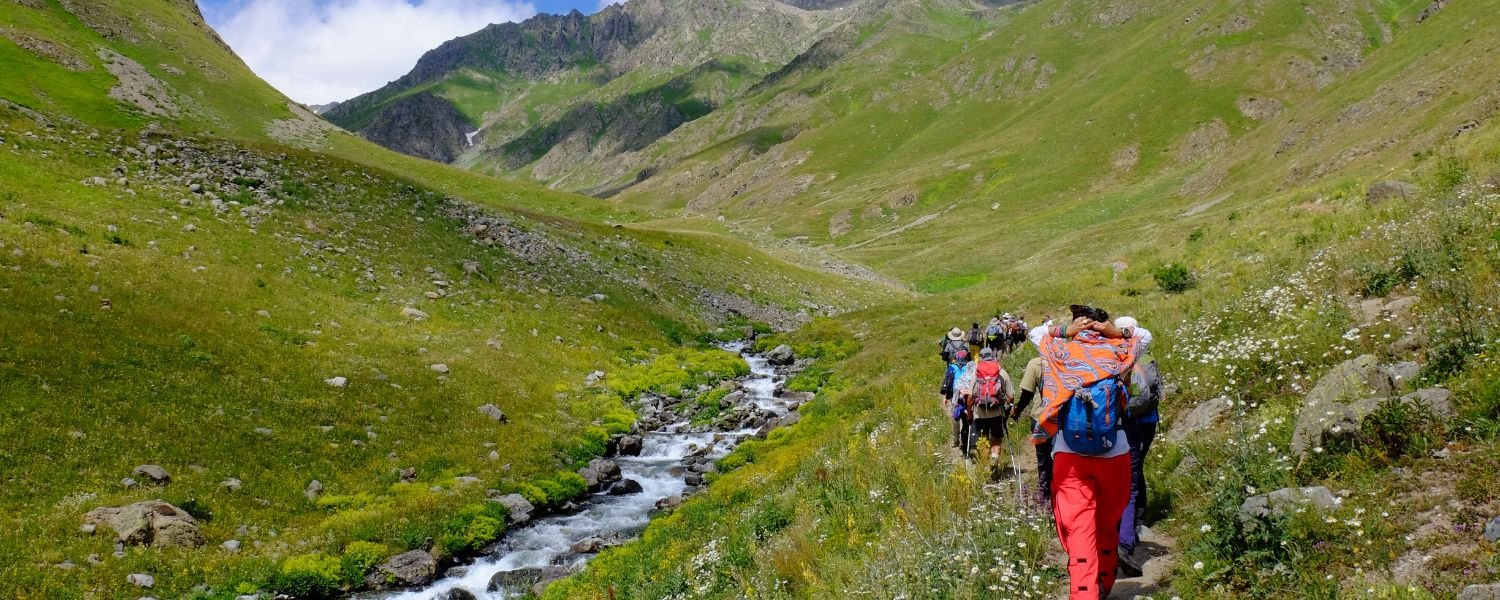
Because of its accessibility and relative ease, the Valley of Flowers Trek is appropriate for hikers with a range of experience levels.
There are expansive views of snow-capped peaks, verdant alpine meadows, and colourful wildflowers along the 12-kilometer trek from Govindghat to Ghangaria.
For those who love the outdoors, it’s a once-in-a-lifetime experience, particularly from July to September when the flowers bloom.
The trek to Nanda Devi Base Camp, on the other hand, is much more difficult. Trekkers are rewarded with breathtaking views of Nanda Devi and the surrounding peaks, but they must brave difficult terrain and high elevations. For seasoned hikers seeking a strenuous adventure, the trek is perfect.
Photographing
Photographers who want to capture nature in its most pristine state will love Nanda Devi and the Valley of Flowers. With its colourful wildflowers, the Valley of Flowers offers countless chances for breathtaking landscape photography, particularly when the flowers are in bloom.
The untamed landscapes and towering, snow-capped peaks of Nanda Devi provide equally stunning views. A photographer’s dream is created in both parks by the way light, shadows, and the beauty of nature interact.
Plants and Animals
Some of the world’s rarest and most beautiful wildflowers can be found in the Valley of Flowers.
In addition to these flora, the valley is home to musk deer, Himalayan tahr, bharal (blue sheep), and snow leopards.
For wildlife enthusiasts who wish to learn more about high-altitude ecosystems and their distinctive inhabitants, this is a great place to go.
Trekkers can explore the alpine meadows and dense forests of Nanda Devi National Park, which are home to animals like snow leopards, brown bears, and wild boars.
The park is a vital location for conservation efforts and a hotspot for biodiversity.
Best Time to Visit Nanda Devi and Valley of Flowers
Summer (May–June)
The Valley of Flowers and Nanda Devi are best visited in the summer. The daytime highs range from 15°C to 25°C, indicating a moderate climate. Trekking is best during this time of year because the snow is beginning to melt and the surroundings are becoming more lush.
The Valley of Flowers becomes even more beautiful as the wildflowers begin to bloom.
Monsoon (July–September)
During the monsoon season, when the Valley of Flowers is at its peak, there is also a lot of rainfall. The potential for landslides and slick paths can make trekking conditions challenging.
But for those who love flowers, this is the ideal time to go because the valley is transformed into a vibrant paradise.
Autumn (October)
Autumn is the ideal season for trekking because of the cool, clear weather. Even though the Valley of Flowers’ flowers might start to wither, the crisp air and clear skies make for great trekking conditions. In addition, the untamed scenery of Nanda Devi is more striking in the autumn.
How to Get Ready for the Valley of Flowers and Nanda Devi Trek
Level of Fitness
A moderate to high level of physical fitness is necessary for both the Valley of Flowers and Nanda Devi treks. Most hikers will find that a moderate level of fitness is sufficient for the less demanding trek to the Valley of Flowers.
This trek is suitable for people who are moderately active and have some trekking experience because it includes walking through meadows, forest paths, and gradual inclines.
On the other hand, the trek to Nanda Devi Base Camp is considerably more difficult and calls for highly fit, experienced hikers. With its steep ascents, rough terrain, and exposure to higher altitudes, the trek to the base camp is physically demanding.
To complete this difficult route, you must have a solid cardiovascular foundation, endurance, and stamina.
Trekking Gear
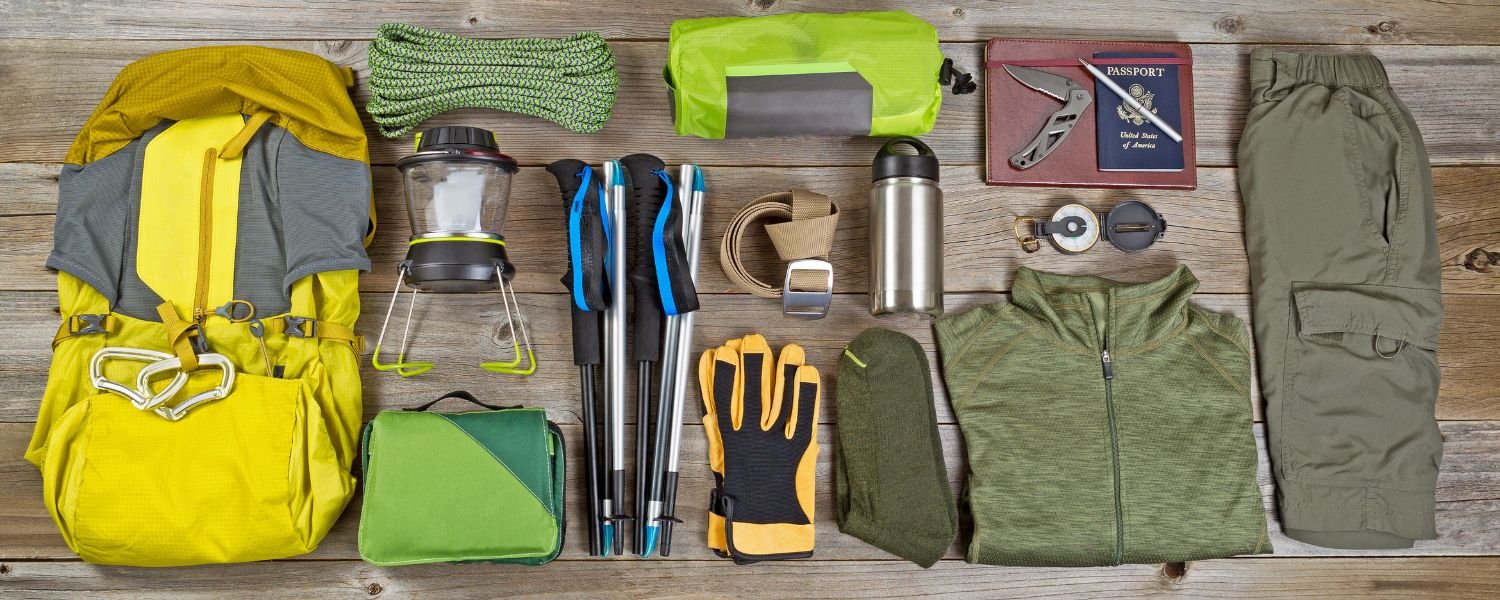
Warm Clothes:
Even though the Garhwal Himalayas are visited in the summer, temperatures can drop suddenly, particularly at higher elevations. Packing warm clothing is crucial, even if you’re trekking from May to October.
At higher elevations, layering is the best strategy, so pack waterproof outer layers, fleece jackets, and thermal inners to protect yourself from cold winds, rain, and possibly snow.
Trekking boots:
The Valley of Flowers and Nanda Devi have rough terrain with uneven ground and rocky paths.
For support and defence against the harsh conditions, sturdy trekking boots are essential.
Make sure your boots have adequate grip and are comfortable for extended hikes, particularly if you intend to take on the more challenging Nanda Devi Base Camp trek.
Hydration and Daypack:
A camera, water, snacks, and other small essentials must be carried in a lightweight daypack. Bring a water bottle or hydration pack because it’s important to stay hydrated on these hikes, especially when you’re trekking at higher elevations.
Because the sun can be very strong at high elevations, remember to wear sunscreen.
Altitude Sickness:
When trekking in high-altitude regions such as Joshimath, Ghangaria, and the Nanda Devi Base Camp, acclimatisation is essential. It is crucial to stay in Joshimath for a day before travelling to Ghangaria in order to prevent altitude sickness.
Before you start the more difficult portions of the hike, this acclimatisation day will help your body get used to the higher elevation.
Trekking Permits
Regarding the Valley of Flowers: To enter the Valley of Flowers National Park, a trekking permit is necessary. You must show proper identification in order to obtain these permits, which are available in Govindghat or Ghangaria.
Regarding Nanda Devi: Special permits from the Forest Department are needed for the more restricted trek to Nanda Devi Base Camp.
Trekkers must abide by the rules established by the authorities because Nanda Devi is a protected area. This will help preserve the environment and safeguard the holy mountain.
Accommodations Close to Nanda Devi and the Valley of Flowers in Ghangaria
Ghangaria is the base camp for hikers going to the Valley of Flowers. Basic guesthouses and trekking lodges with basic amenities like food and water are available in Ghangaria.
A variety of reasonably priced lodging options are available because this is a well-known trekking destination.
Even though the amenities aren’t particularly opulent, they offer a cosy and inviting spot to unwind after a strenuous day of hiking.
Joshimath
The main town for visitors going to Nanda Devi Base Camp and the Valley of Flowers is Joshimath.
The town is bigger and the lodgings are more comfortable. Among the well-known lodging options in Joshimath are:
GMVN Guest Houses (Vikas Nigam, Garhwal Mandal)
The Tata Guest House
Small, neighbourhood hotels and guesthouses with a variety of amenities to fit a range of price ranges.
Joshimath is a great place to stay both before and after the trek because it provides better connectivity and access to transportation.
Going camping
Some hikers, particularly on the Nanda Devi trek, prefer to camp along the route for those seeking a more daring experience. Camping offers a special and personal encounter with nature by allowing you to fully immerse yourself in the environment.
Make sure you have the appropriate camping supplies, such as tents, sleeping bags, and cooking equipment, if you decide to camp.
Nearby Attractions
Auli
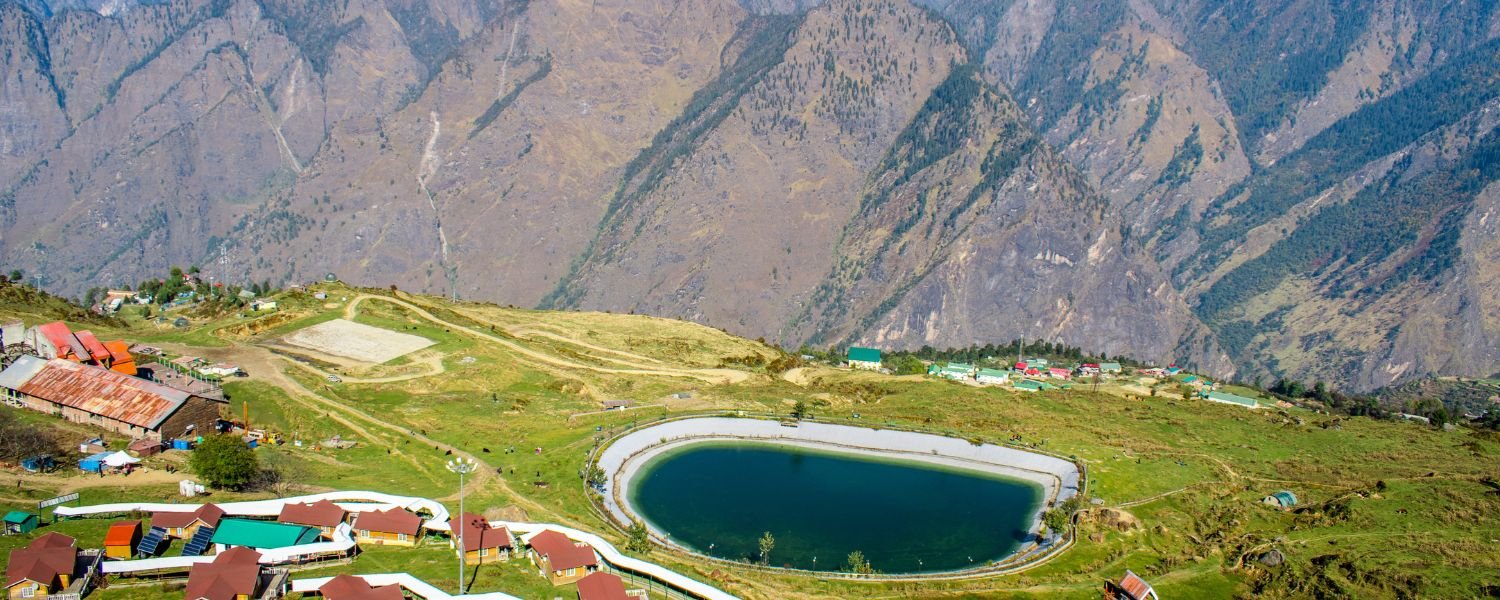
The stunning ski resort of Auli, which is only a short drive from Joshimath, is well-known for its picturesque vistas and snow-capped mountains. In addition to being a well-liked winter destination for skiers, it’s also a great summer destination.
One of Asia’s longest cable cars, the Auli Gondola, provides stunning views of the neighbouring Himalayan peaks.
Hemkund Sahib
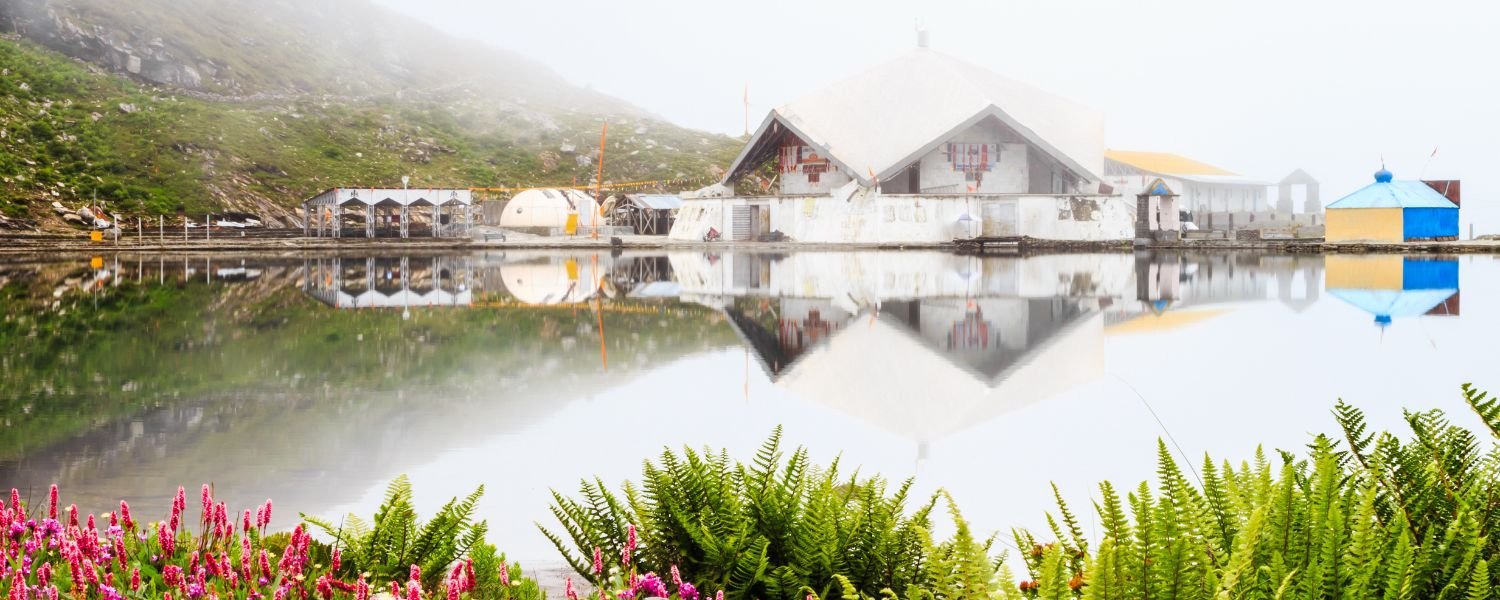
Near Ghangaria is Hemkund Sahib, one of the most sacred Sikh shrines. Many hikers visit Hemkund Sahib, which is 4,329 meters above sea level, as a pilgrimage destination after finishing the Valley of Flowers trek.
It is a great place to stop for peace and spiritual reflection because of the tranquil lake and the surrounding mountains, which enhance the place’s spiritual atmosphere.
Badrinath
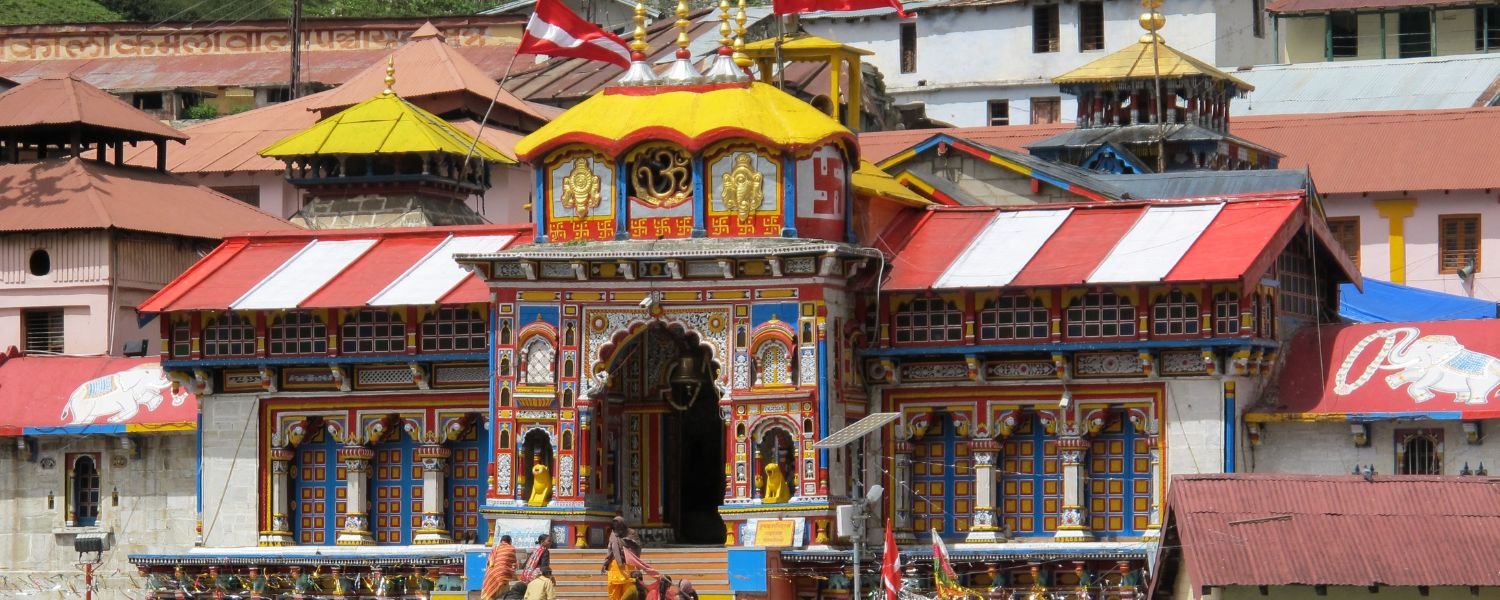
One of the Char Dham pilgrimage sites in India is Badrinath, which is close to Joshimath. Each year, thousands of devotees flock to the Badrinath Temple, which is devoted to Lord Vishnu.
Both pilgrims and tourists find Badrinath to be a popular destination due to its picturesque surroundings and spiritual significance.
Travel Tips for Visiting Nanda Devi and Valley of Flowers
Stay Hydrated
Maintaining hydration throughout the walk is essential, particularly in high-altitude settings where the air is thin and dehydration can strike rapidly.
To prevent dehydration, keep enough water on hand and drink frequently. To replace salts and minerals lost during the hike, you can bring electrolyte drinks in addition to water.
Honour the culture of the area
The native inhabitants of the area, known as the Garhwali, are very attached to their land and culture.
Respecting local customs, traditions, and practices is crucial when travelling there. If you come across any religious rituals or holy places, treat them with respect and keep your voice down.
Pack Light
Packing light is crucial, even though you will need to bring the necessary trekking equipment. It can be physically exhausting to trek with heavy bags, so only bring what you need.
Before you begin your trek, you can drop off any extraneous items in Joshimath or Ghangaria.
Regional Cuisine
Try the traditional Garhwali cuisine in Ghangaria and Joshimath, including Raita, Ghaat (a thick dal dish), and Aloo Ke Gutke (spicy fried potatoes).
The food is straightforward but filling and gives you the energy you need to walk. It’s a fantastic way to experience the local way of life and savour the cuisine.
FAQs, or frequently asked questions
1. How challenging is the trek to Nanda Devi Base Camp?
Considered extremely difficult, the Nanda Devi Base Camp trek is best suited for seasoned hikers.
It calls for exceptional physical fitness and acclimatisation because it involves rough terrain, steep ascents, and high altitudes. The walk is not for novices and is technically challenging.
2. Does the walk to the Valley of Flowers require a guide?
Even though the Valley of Flowers walk is fairly straightforward and clearly marked, for the most genuine experience, it is best to hire a local guide.
A guide can guarantee your safety during the trip, help you find your way around, and give you information about the local wildlife and plants.
3. Does the Valley of Flowers and Nanda Devi region have cell service?
The Valley of Flowers and Nanda Devi areas have spotty or nonexistent cell service. It’s advisable to let loved ones know about your trip plans ahead of time.
It is advised to have a radio or satellite phone on hand in case of an emergency.
4. Can I go to Nanda Devi and the Valley of Flowers in the same trip?
Indeed, a single trip can include visits to both Nanda Devi and the Valley of Flowers. But it takes enough time and careful planning.
If you’re an experienced hiker, you can start at the Valley of Flowers and work your way up to the Nanda Devi Base Camp.
5. How should I respond if I get altitude sickness?
It’s critical to descend right away and take a break if you suffer from altitude sickness symptoms like headache, nausea, dizziness, or trouble breathing.
Avoid exertion, stay hydrated, and give your body time to adjust. Seek immediate medical attention if the symptoms continue.
